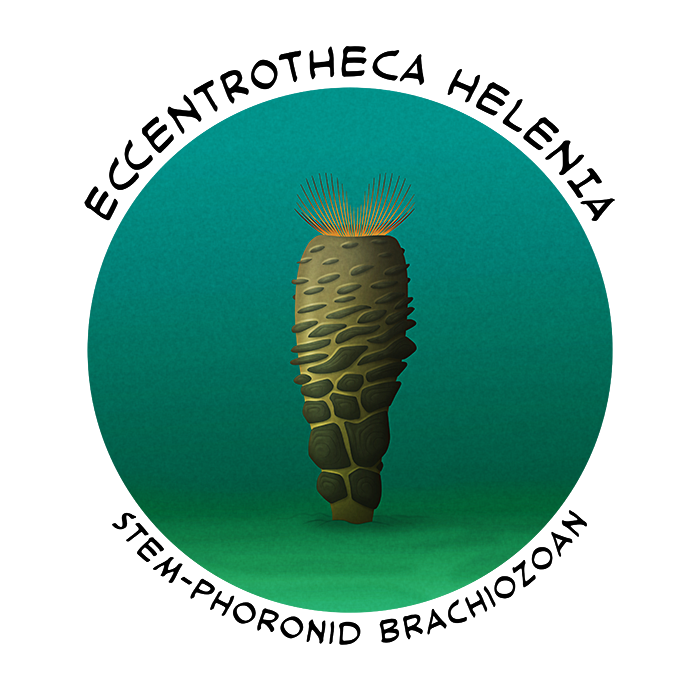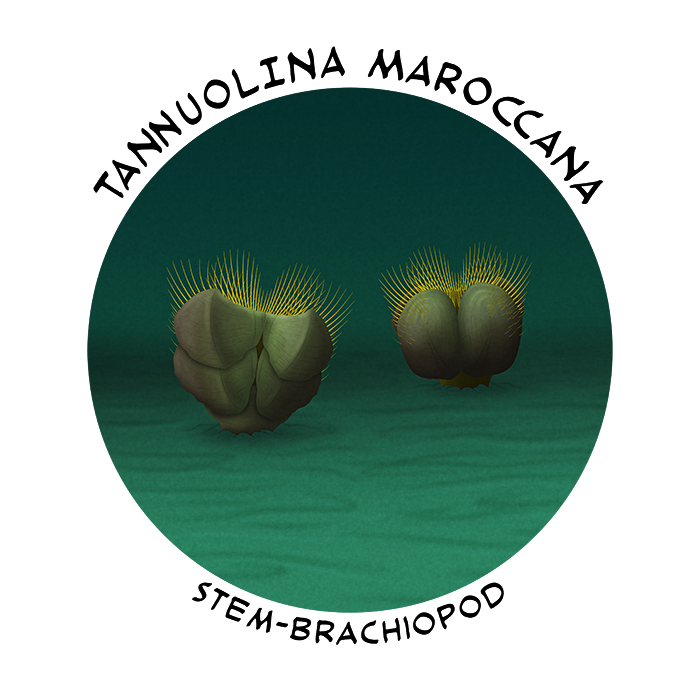The last group we’re looking at this month are the brachiozoans, a lineage that includes modern horseshoe worms and brachiopods along with the extinct hyoliths.
Horseshoe worms, or phoronids, are represented by about 15 living species and are usually considered to be their own phylum, but some analyses classify them as a sub-group of brachiopods instead. Like other lophophorates they have a “crown” of filter-feeding tentacles around their mouths, and similarly to some bryozoans they build protective chitinous tubes around their bodies.
There are no definite body fossils of phoronids at all, although there are a few possible trace fossils of their tubes and the enigmatic fossil hederelloids might be related to them.
But some Cambrian fossils might give us a hint about their evolutionary history.
Tommotiids were early brachiozoans found worldwide between about 530 and 500 million years ago. They were originally known only from tiny isolated shell plates that made their full anatomy difficult to reconstruct, and they were thought to be armored slug-like animals similar to halkieriids. But in the late 2000s articulated specimens were finally discovered, revealing that some tommotiids actually looked very different from that concept.

Eccentrotheca helenia was the first tommotiid found with its shells articulated, discovered in South Australian fossil deposits dating to around 520 million years ago. About 5mm long (0.2″), it was a sessile tubular animal with irregular shell plates spiralling up around its body forming a stiff cone.
It would have lived with its base attached to the seafloor, while its filter-feeding lophophore tentacles pointed up into the water column – and it may have been closely related to phoronids as part of an early stem lineage.

Other tommotiids were probably more closely related to the ancestors of brachiopods and hyoliths (making them paraphyletic and more of an “evolutionary grade” than a defined lineage), and forms like Tannuolina maroccana had fewer shell plates in a more symmetrical arrangement.
Known from Morocco around 520 million year ago, this tommotiid was about 4mm long (0.16″) with multiple overlapping shell plates on one side of its body and a single pair on the other side. Small holes in the surface and edges of some of its shells may have had hair-like sensory setae protruding through them.
Its shell arrangement suggests that brachiopods’ two valves may have originated through gradual reduction and specialization of earlier complex tubular Eccentrotheca-like patterns.
